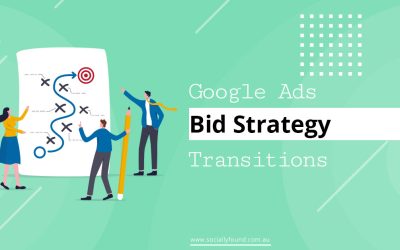
In today’s highly competitive e-commerce landscape, using AI for product titles and descriptions can hold the key to a successful marketing strategy. They are not only the first point of contact between your product and potential customers but also play a critical role in influencing purchasing decisions.
The challenge, however, lies in crafting titles and descriptions that are not only compelling and unique but also optimised for search engines. This is where artificial intelligence (AI) comes in, offering a range of tools and techniques to help e-commerce businesses streamline their product marketing efforts.
The use of AI for product titles and descriptions is rapidly gaining traction, with businesses of all sizes leveraging its power to create more effective marketing campaigns. AI enables businesses to generate highly targeted and personalised product titles and descriptions, optimising them for search engines and increasing their visibility to potential customers.
By automating the process of title and description creation, AI can help businesses save time and resources while ensuring consistency and accuracy in their product marketing efforts.
In this article, we will explore the benefits of using AI for product titles and descriptions, and introduce tools and techniques that e-commerce businesses can leverage to enhance their marketing strategies.
Key Takeaways
- AI-generated product titles and descriptions can provide compelling, scannable content that is optimised for various formats, tones, and languages.
- AI writing assistants and product description generator tools are becoming increasingly popular, offering personalisation and SEO benefits.
- Choosing the right AI tool and techniques requires defining goals and objectives, experimentation, and constant analysis and optimisation of campaigns.
- To complement AI-generated content, it is important to fine-tune and edit the generated content and improve search engine rankings through optimisation techniques, such as natural language processing and machine learning algorithms.
Benefits of Using AI for Product Titles and Descriptions
Despite the potential loss of jobs for some copywriters, the rise of AI product description generators and other AI writing tools has brought about numerous benefits for businesses.
One key advantage is increased efficiency. These automated tools can produce a large number of outputs within a short time, catching product ideas faster than training a copywriter. This saves businesses both time and money, allowing them to focus on other essential tasks.
Another benefit of using AI for product titles and descriptions is accuracy. AI-powered writing assistants can generate exact and original descriptions that are free from repetition and grammar errors. They can also understand brand voice and maintain a natural tone, providing quality product descriptions that are essential for grabbing viewer attention. Additionally, these tools provide grammar and plagiarism error-free content to help refresh old product features and improve SEO.
Lastly, AI can be beneficial because they provide sales-focused content that can increase profits. These tools are optimised for SEO, ensuring that product titles and descriptions are precisely targeted to the right audience. This can lead to increased profit and allows businesses to stay competitive in today’s market.
With all these benefits in mind, it’s clear that AI-powered writing assistants and copywriting tools are essential for businesses that want to generate compelling product titles and descriptions that will boost their sales.
Through increased efficiency, accuracy, and sales-focused content, understanding how to utilise AI will revolutionise the way businesses market their products.
In the next section, we’ll explore how AI can be used to generate compelling product titles.
How AI Generates Compelling Product Titles
Utilising sophisticated algorithms, artificial intelligence technology generates product titles that capture the essence of a product, highlighting its unique features and benefits, and conveying a sense of excitement and intrigue to potential customers. Here are five ways AI generates compelling product titles:
- AI generator tools analyse product features and benefits to create concise and relevant titles that are optimised for search engines, increasing a store’s visibility to potential customers.
- AI copywriting tools use natural language processing to generate titles that are engaging and persuasive, appealing to the emotional needs and wants of customers.
- Content writing tools create titles that are original and unique, avoiding generic phrases and cliches, making them stand out from competitors and increasing the chances of customer engagement.
- AI analyses customer behaviour and preferences inputs to generate titles that are personalised, resonating with customers and increasing the likelihood of sales.
- Quality product titles generated by AI are consistent in tone and style, enhancing the overall customer experience and creating a trustworthy and professional image for a store.
The role of AI in crafting unique product titles is extremely important. By analysing customer needs and preferences, these AI-generated titles can create personalised content that engages with target customers. Additionally, AI can analyse market trends and competitor strategies, helping stores create descriptions that are relevant and differentiate themselves from competitors. With this technology, stores can create high-quality product titles that drive traffic to their sites and potentially increase conversions.
Using AI to Craft Unique Product Descriptions
Ironically, the use of artificial intelligence technology in generating product descriptions, despite its lack of human touch, can create personalised content that resonates with customers and leads to increased sales.
AI product description generators can produce automated product descriptions that are scannable, use natural language, and highlight benefits over features. By asking for product names, preferred keywords, and other information, AI writing tools can create compelling product descriptions at scale in different formats, tones, and languages.
In crafting unique product descriptions, AI can help marketers optimise their content by organising it, including visuals and videos, and incorporating reviews and testimonials. AI tools can generate product descriptions in multiple languages, making it easier for businesses to expand their customer base worldwide.
Moreover, AI-powered applications can help marketers identify relevant keywords and highlight product benefits, leading to improved search engine rankings and higher conversion rates. Overall, AI has become an essential tool for businesses looking to streamline their marketing efforts and stay ahead of the competition.
In the next section, we will look at AI tools for product titles and descriptions for e-commerce with some helpful products that have been tried and tested.
AI Tools For Product Titles and Description
The use of AI product description generator tools has become increasingly popular among e-commerce businesses due to their ability to save time and money, improve processes, and produce high-quality product descriptions. These tools are not on par with a human copywriter, but they can help automate a marketing content strategy.
Here are some AI tools that can be used to help e-commerce businesses:
- Copy.ai uses GPT-3 language models to generate high-quality product descriptions that are both SEO-friendly and customer-centric.
- Writesonic is another tool that uses machine learning algorithms that are optimised for search engines and tailored to customer needs.
- Jasper uses natural language processing that can generate high-quality titles and descriptions that are engaging and persuasive, while also being optimised for search engines.
- Rytr is another similar tool that uses natural language processing to tailor your products to customer needs, while also being optimised for search engines.
In a nutshell, using these writing tools can help e-commerce businesses create high-quality product titles and descriptions that are SEO-friendly and can increase average order value. However, it’s important to note that these tools should be used as a complement to, not a replacement for, human copywriters.
For those not looking to jump into one of the AI writing tools mentioned above, another option is to utilise the power of ChatGPT. Creating unique product titles and descriptions for your online store can be done quite easily with some well-crafted prompts but we’ll break this down in another article.
Moving forward, the key to standing out in the crowded e-commerce market is to personalise product titles and descriptions using AI. In the next section, we will explore how AI can be used to create personalised product descriptions and titles for e-commerce businesses.
AI to Personalise Your Product Titles and Descriptions
Customising product descriptions and titles using AI can be compared to a tailor-made suit, where the technology can provide personalised details that cater to the unique preferences and needs of the customer. AI-powered writing assistants are becoming increasingly popular among many savvy online marketers looking to streamline their efforts. These tools can help businesses save an incredible amount of time and resources.
When choosing an AI writing assistant, businesses should consider factors such as ease of use, customisation options, and pricing. It’s also important to keep in mind that while AI-powered tools can be incredibly helpful, they should not be relied on solely for creating product descriptions and titles. Fine-tuning and editing the generated content is crucial to ensure that it accurately reflects the unique selling points of the product and resonates with the target audience.
Enhancing your SEO with AI is the next logical step in optimising your e-commerce business. By incorporating relevant keywords and optimising the structure of your product descriptions and titles, you can improve your search engine rankings and attract more qualified organic leads to your website.
In the next section, we will discuss some tips for maximizing the effectiveness of AI in your product marketing strategy.
Maximising AI in Your Product Marketing Strategy
To fully harness the potential of AI in product marketing, businesses must leverage its capabilities to create personalised and impactful experiences for their target audience.
One of the key tips for maximising the effectiveness of AI is to define clear goals and objectives for its use. This will help businesses identify the AI tools that are best suited to their requirements and enable them to measure the success of their AI-powered campaigns.
Another important tip is to experiment with various AI tools before committing fully to one. This will help businesses understand the strengths and weaknesses of different AI solutions and choose the one that best fits their marketing needs.
It is also essential to constantly analyse and optimise website pages to get the most out of AI. This involves understanding the audience and their needs, as well as regularly collecting and analysing data and insights to make informed decisions.
Incorporating AI into the workplace will create new job opportunities and help professionals work more efficiently and effectively. However, it is important to remember that AI is not intended to replace human talent but to add to it and make it better.
By embracing AI solutions, businesses can save time and resources and create more targeted, effective website copy that produces results. Ultimately, businesses that integrate AI into their marketing strategy can be better positioned to deliver faster and more impactful results that drive customer engagement.
Frequently Asked Questions
What are the limitations of using AI for product titles and descriptions?
Limitations of using AI include the inability to sometimes capture the nuances of human language and context, which can lead to inaccurate or irrelevant recommendations.
Additionally, AI may not be able to understand the unique brand voice and tone, leading to generic and uninspired content.
There is also the risk of over-reliance on AI, where human creativity and critical thinking are overshadowed by automated recommendations.
It is important to note that AI should be used as a tool to enhance human decision-making rather than replacing it entirely. Therefore, while AI can improve the efficiency of content generation, it cannot replace the value of human input and creativity.
How does AI technology differ from traditional copywriting methods?
As compared to traditional copywriting methods, AI technology utilises data-driven techniques to create content that is customer-centric, concise, and effective.
Unlike human copywriters who may rely on creative intuition and personal biases, AI algorithms analyse vast amounts of data to identify patterns and trends in consumer behaviour, language, and preferences.
By harnessing the power of machine learning, AI can generate content, such as product titles and descriptions for Ecommerce stores that are tailored to specific target audiences and optimised for search engine rankings.
However, despite these advantages, AI technology can still face limitations in terms of understanding context, creativity, and emotional appeal, which are essential components of effective copywriting.
As the adage goes, ‘To err is human, to forgive is divine.’ While AI may not be perfect, it has the potential to revolutionise the way we approach product marketing and copywriting.
Can AI-generated results be tailored to different target markets?
AI-generated content can indeed be tailored to different target markets and demographics. This is because AI algorithms are capable of analysing and understanding the preferences and needs of different customer segments. Using AI is only as good as the information you provide it, and those businesses that understand their customer base can create content that will resonate with them.
Additionally, AI can use natural language processing and sentiment analysis to ensure that the content is written in a tone and style that is appropriate for each target market. This level of customisation can help businesses to improve customer engagement and drive sales by creating product titles and descriptions that speak directly to the needs and preferences of their target audience.
What manual interaction is required when using AI?
When using AI, the level of human oversight required depends on the specific use case and the quality of the data used to train the AI model.
In some cases, AI may be able to generate accurate and relevant product titles and descriptions with minimal human input. However, in other cases, human oversight may be necessary to ensure that the AI-generated content aligns with the brand’s messaging and is appropriate for the target audience.
Additionally, human oversight may be needed to make adjustments to the AI model if it is not performing optimally. Ultimately, the level of human oversight required when using AI for product titles and descriptions should be determined on a case-by-case basis to ensure that the content produced meets the brand’s objectives and resonates with its customers.
In any case, we would always recommend ensuring that you check anything that is created from AI before going ahead and implementing it into their website.
How does AI-generated content impact customer experience?
In the case of using AI for generating product titles and descriptions, it can have a significant impact on the overall customer experience and perception of a brand. By automating the process of generating product titles and descriptions, businesses can improve consistency and accuracy while also increasing efficiency.
However, there are concerns about the potential to lack personality and creativity, which can detract from the customer experience. Additionally, there is a risk that it may not accurately reflect the unique features and benefits of a product, leading to customer confusion and dissatisfaction.
Ultimately, the success will depend on the ability of businesses to strike a balance between automation and personalisation, ensuring that the customer experience remains at the forefront of all decision-making processes.
Metaphorically speaking, AI can be a powerful tool in the toolbox of businesses, but it must be wielded with care and precision to avoid causing more harm than good.
Conclusion
In conclusion, the use of AI has become an essential tool for e-commerce businesses. It not only saves time but also generates compelling and unique content that helps businesses stand out in a crowded market.
The top AI tools offer a range of features that help businesses personalise their content, enhance SEO, and maximise their marketing strategies. To fully maximise the effectiveness of AI-generated content, businesses need to understand how it works and how to evaluate the best tool for their needs.
By implementing AI into their product marketing strategies, businesses can increase their sales and customer engagement, and ultimately, improve their bottom line. As the demand for personalised and unique content continues to grow, AI-powered content will become an increasingly valuable tool for e-commerce businesses.
Ensuring that you’ve optimised your product title and descriptions, businesses can stay ahead of the competition and provide their customers with a personalised and unique shopping experience. With the right AI tool, businesses can emphasise the importance of their marketing strategies by structuring their content in a similar way. This technique not only makes the writing more engaging but also reinforces the key points in a concise and customer-centric way.





